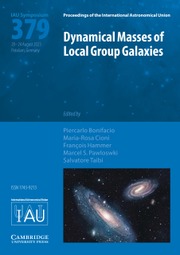No CrossRef data available.
Article contents
The Formation and Evolution of ONe White Dwarfs: Prospects for Accretion Induced Collapse
Published online by Cambridge University Press: 17 January 2013
Abstract
I review our current understanding of the evolution of stars which experience carbon burning under conditions of partial electron degeneracy and ultimately become thermally pulsing “super” asymptotic giant branch (SAGB) stars with electron-degenerate cores composed primarily of oxygen and neon. The range in stellar mass over which this occurs is very narrow and the interior evolutionary characteristics vary rapidly over this range. Consequently, while those stars with larger masses (~11 M⊙) are likely to undergo electron-capture accretion induced collapse, those models with smaller masses (8.5 ≲ M/M⊙ ≲ 10.5) will presumably form massive (M ≳ 1.1 M⊙) white dwarfs. The final outcome depends sensitively on the adopted mass-loss rates, the chemical composition of the massive envelopes, and on the adopted prescription for convective mixing.
Keywords
- Type
- Contributed Papers
- Information
- Proceedings of the International Astronomical Union , Volume 7 , Issue S281: Binary Paths to Type Ia Supernovae Explosions , July 2011 , pp. 52 - 59
- Copyright
- Copyright © International Astronomical Union 2013


